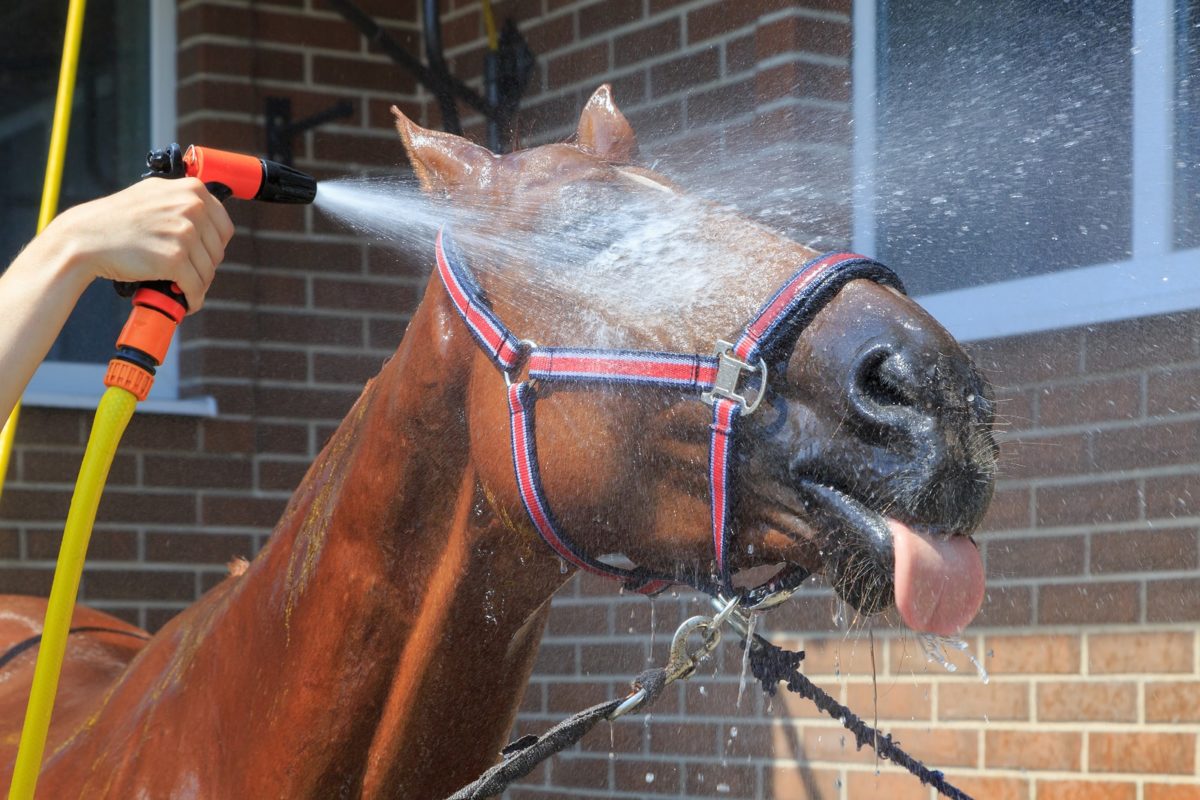
The heat is more than just very uncomfortable for horses; it’s a serious health hazard. No matter the state of your horse, they are not equipped to deal with extreme heat. If you don’t manage your horses properly, they could easily become dehydrated, weak, or even have a stroke.
Whether you’re a recreational horse owner or run an equine business, it’s important to know how the heat affects your horses. Since they can’t talk to you, it’s up to you to create an environment for them that is safe and comfortable.
Essential Tips
There are a few simple things that you, as a horse owner, should always be doing.
- Keep clean water in limitless supply, no matter what day or time it is.
- Make sure plenty of shade from trees or shelters is available. In a herd situation, observe carefully to make sure weaker, older or less-dominant horses are not being chased away from water or shade.
- If you provide free-choice salt, horses should be eating at least 2 oz./day. Weigh your blocks or bricks consistently to make sure. If they’re not consuming this much salt on their own, add it to their feed or make a small daily meal of soaked beet pulp with 2 tablespoons of salt.
- Bring the horses in during the hottest part of the day and treat them to a hosing. Some horses really enjoy a sprinkler system. Keep it outside your pasture fencing and set it to spray inside.
- Consider setting up large fans in your run-in area, making sure cords are out of reach.
The Cooldown
An overheated horse, either from exercise or simple heat exposure, needs aggressive cooling. It is a common myth that you can’t use cold water on a hot horse. In fact, doing so could prevent a life-threatening condition. Here’s a step-by-step guide to cooling down an overheated horse:
- Using cold water from a hose, run it over the horse’s chest, the jugular grooves of his neck, and the lower legs. These areas have many superficial blood vessels that can be quickly cooled to carry the cooled blood to the interior of the horse.
- Once the horse seems less distressed, progress to hosing the entire body. Continue the hosing until the water running off underneath the horse’s body feels cool. This means the water is no longer picking up large amounts of heat from the surface of the skin.
- The horse should then be slowly walked in a shaded area. Observe him carefully to make sure the breathing rate doesn’t climb again or that the horse begins to sweat. If this happens, repeat the cooling process.
- Offer room temperature water at frequent intervals throughout this process. If the horse is very distressed at first, they probably won’t drink but keep trying.
Black, brown, and overweight horses will have the most trouble regulating their body heat. Foals and older horses may also have trouble regulating their body heat. Watch these high-risk groups very carefully for signs of extreme depression, weakness, drenching sweat or failure to sweat, and even panting. If these occur, begin the cooldown process immediately.
If no one is around to observe the horses during the hottest part of the day, it can be helpful to confine them to the barn or a small area you know has adequate shade.
About Sine Insurance
At Sine Insurance Group, we are dedicated to providing you with custom tailored insurance policies to protect your assets. Our comprehensive packages have been expertly crafted to serve St. Louis and the surrounding areas for the past 25 years. For more information about our products, contact us today at (636) 947-1177.

